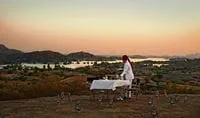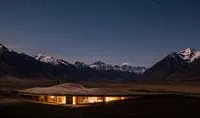5 Best Castles to Visit in Japan
20 February 2023

Visually spectacular and culturally significant, castles in Japan are an important part of its rich history, providing a fascinating insight into its ancient stories and traditions. Once used to defend important sites against invaders – a samurai’s fortress – these beautiful structures have an otherworldly quality to them, which will instantly transport you back to a time of great battles and brave warriors.
At one point there were thought to be as many as 5,000 throughout the country but today only about a hundred remain. Now they are protected as UNESCO World Heritage sites, used as museums or even locations for films like James Bond’s You Only Live Twice.
While the architecture of European castles might be more familiar to you, Japan’s fortresses are more intricately designed; they are the stuff of Japanese fairy tales. And if the walls could talk, the tales they’d tell would excite and thrill. Incorporating a trip to see one or more of Japan’s majestic castles is a must for anyone wanting to take a deeper look at how the country came to be what it is today.
History of Castles in Japan
Japanese castles have been around since ancient times – approximately 10 BC – but it was in the 15th century that the need for them as fortresses grew. During this time, the government’s power had weakened, and the country was divided into dozens of warring states who built small castles in Japan mainly on top of mountains to protect their land. The most senior samurai lived in the castles with the next in rank living the next closest and so on.
Later, in the 16th century, when Oda Nobunaga reinstated a central authority over Japan, and his successor Toyotomi Hideyoshi completed the reunion of the country, many larger castles were built. This time they were seen as a symbol of authority and power rather than for defence purposes and might be used as military and administrative bases. During this period, the shoguns lived in the castles and their vassals would live nearby.
In the 19th century, the Meiji government destroyed most of the country’s castles in an attempt to westernise the nation. However, 12 still remain with their original castle tower (or main keep) built during the Edo period (1603–1867) and these are known as the 12 original castles. They include:
- Bitchū Matsuyama Castle
- Hikone Castle
- Himeji Castle
- Hirosaki Castle
- Inuyama Castle
- Kōchi Castle
- Marugame Castle
- Maruoka Castle
- Matsue Castle
- Matsumoto Castle
- Matsuyama Castle
- Uwajima Castle
Best Castles to Visit in Japan
Chosen because of their historical importance or architectural beauty, we have selected 5 of the best castles in Japan. Read on to start planning your visit.
Himeji Castle

Located at a strategic point along the western approach to Kyoto, Himeji Castle can be visited on a day trip from both Kyoto and Osaka. Originally built as a fortress by a samurai in the 14th century, the UNESCO-listed Himeji Castle is one of only 12 castles in Japan that exist in their original form, having successfully evaded any damage from war, earthquakes, or fire. Constructed mainly from wood, the towering white castle comprises 83 buildings (making it the biggest castle in Japan) and is also known as White Heron Castle, owing to its elegant appearance and colour. It is widely recognised as one of the most beautiful castles in Japan and has been used in countless TV shows, as well as You Only Live Twice with Sean Connery as James Bond. Due to the age of the castle, visitors are required to take their shoes off to explore inside the Japanese castle interior.
Best time to visit: This is one of the oldest castles in Japan and one of the most popular, so it attracts big crowds. December, January, February and June are its quietest months, and if you’d rather not join the queues, arrive early in the morning or visit on a weekday.
Who should visit?: Himeji is an easy day trip from Osaka or Kyoto and is a spectacular example of Japanese architecture. If you’re visiting Japan with kids, this is a great activity for you all. Children and adults alike will gawk at its splendour, even if they have no interest in history. Himeji Castle is surrounded by hills and lots of steps inside the building so is best for good walkers.
Matsumoto Castle

Situated in the mountain city of Matsumoto within the Japanese Alps, Matsumoto Castle is one of Japan’s main historic buildings and is rated as a National Treasure. It is one of the most beautifully preserved of Japan’s castles. Commonly known as the ‘Crow Castle’ due to its dramatic black exterior, Matsumoto is unusual in that it is a flatland castle, unlike those built on hilltops or beside rivers. Built in the late 16th century, the castle has an impressive series of moats, gatehouses, and fortified walls.
Best time to visit: Spring is the best time to visit Matsumoto Castle when its 300 cherry blossom trees will be in full bloom. However, autumn is also beautiful, when the foliage has turned orange and you can see the snow-capped peaks of the Japanese Alps in the background. The Castle Festival is held between mid-October and early November when lots of events, activities, and exhibitions take place at the castle making it a fun time to visit.
Who should visit?: Matsumoto Castle is one of the most complete, historic castles in Japan. It is surrounded by beautiful gardens, which come to life when the trees are in blossom. The castle itself includes lots of steep wooden steps to the top so it is best for energetic travellers and the gardens are a wonderful place for kids to run off energy. There is something for everyone in Matsumoto, including artists who’ll love the Japan Ukiyo-e Museum’s art collection and foodies who can indulge in Daio Wasabi Farm’s tastings.
Kanazawa Castle

Kanazawa Castle is situated adjacent to the famous Kenrokuen Garden, and combining the two makes for the perfect day out in Kanazawa. The seat of the powerful and wealthy Maeda Clan from 1583 to the end of the Edo period in 1868, Kanazawa Castle burnt down several times over the centuries. Since the last major fire in 1881, an ongoing restoration project has restored many of the castle’s central structures. Today not much remains of the original castle, apart from the Ishikawa-mon Gate and Sanjikken Nagaya Warehouse. However, this is still a very interesting site to visit, with a fascinating history and much like visiting a museum. Because of the reconstruction, the castle has lifts inside the building, making it more accessible than some of the oldest castles in Japan.
Best time to visit: The two best times to visit Kanazawa are September to mid-November (autumn) and March/April/May (spring).
Who should visit?: Kanazawa is an enchanting city, often snubbed in favour of the bigger ones. Known as Little Kyoto, the city is accessible by bullet train from Tokyo in just over 3 hours. Combine a trip to the castle with a couple of nights taking in all the sites, including:
- Kenrokuen Gardens (one of Japan’s top three gardens)
- The 200-year-old fish market
- Quiet streets dotted with Shinto and Buddhist shrines
- Ancient teahouses
- Historic kilns
Hiroshima Castle

Built in 1589 by a powerful feudal lord, Hiroshima Castle was an important seat of power in western Japan and is a good example of a castle in Japan built in an urban centre as opposed to on a hilltop. Destroyed by the atomic bomb of 1945, the castle has been partially restored using original building methods and materials. The castle, which spans five floors, offers panoramic views of the city. Meanwhile, this Japanese castle’s interior includes a museum displaying samurai culture, which provides a real insight into the pre-atomic history of Hiroshima.
Best time to visit: As with most of Japan, Hiroshima has the best weather in spring and autumn, visiting in May or between September and November is ideal. Avoid June to October, when the city is prone to typhoons. And April can get very busy with cherry blossom hunters.
Who should visit?: Hiroshima is known for being a city that loves its food, but it is also well-placed for a trip to Miyajima for keen hikers and nature lovers. A visit to Hiroshima Castle is best for more active travellers as the only access to the top of it involves lots of steps.
Osaka Castle

Eight stories high and surrounded by a moat, Osaka Castle is one of the most famous castles in Japan. The site includes thirteen buildings and structures in total, including several turrets, a tea house, and gates. Over the years it has undergone many reconstructions. Initial building began in 1583 on the former site of a temple, and it was the biggest castle in Japan at the time. Although it was intended to be the new centre of rule for a unified Japan under the rule of Toyotomi, the castle was attacked and destroyed between 1614 and 1615. Having been rebuilt, the castle tower was then struck by lightning in 1665 and only reconstructed in 1931.
Osaka Castle is a very different offering to nearby Himeji Castle and people often ask which to visit on their trip. Himeji Castle is about 150 years older than Osaka Castle and was built about 60-90 minutes away from Osaka. While Himeji gives a more authentic representation of ancient Japanese castles, Osaka Castle is a modern recreation, it is museum-like, with interesting exhibitions and displays depicting what life as a shogun would have been like. That said, it’s a spectacular sight, particularly at night when it is lit up dramatically showing off all its beauty and attracting up to 2.5 million visitors each year.
Best time to visit: The best time to go to Osaka is during spring and autumn, however, it can get very busy in May, which is peak season.
Who should visit?: Osaka Castle is a fun half-day trip for families, there are exhibitions and chances to dress up, plus gardens to explore. The modernisation means that the castle has a lift that will take you up to the castle keep, so it is accessible for everyone.
Start Planning Your Trip Today
To book your holiday to Japan, get in touch with one of our Asia Specialists by filling out the enquiry form at the top of the page. For some inspiration browse our Japan itineraries, which include castles in Japan:
This entry was posted in and tagged Japan.
Why Scott Dunn?
Unique to You

- We listen to your travel goals and craft unique trips that are bespoke to you.
- We’re with you every step of your life’s travel journey, from honeymoons to family trips and beyond.
Seamless Service

- Global offices in the UK, US, and Singapore for 24/7 seamless service.
- We offer flexibility if your plans change so you can book with confidence and peace of mind.
Carefully Curated Collection

- We’ve curated an elevated collection of accommodation, experiences, and guides.
- Committed to fostering close global relationships to continue bringing you unique experiences.
Luxury in Every Sense

- We deliver a sense of luxury that matters most to you.
- Awarded Condé Nast Traveller’s Top Travel Specialists in the World 12 years in a row.




